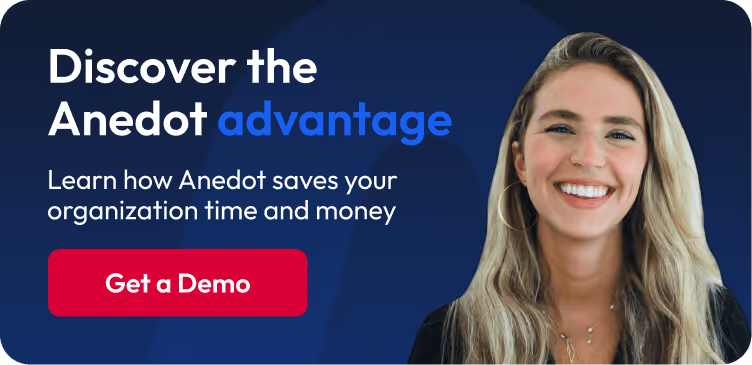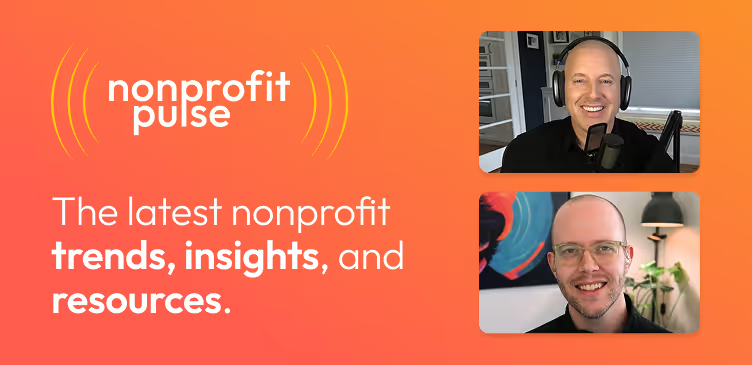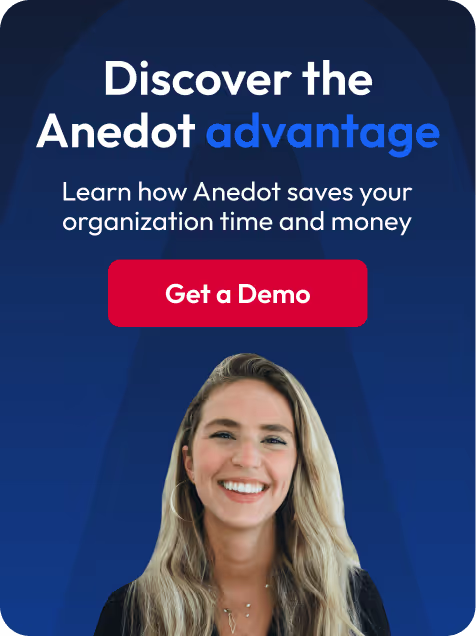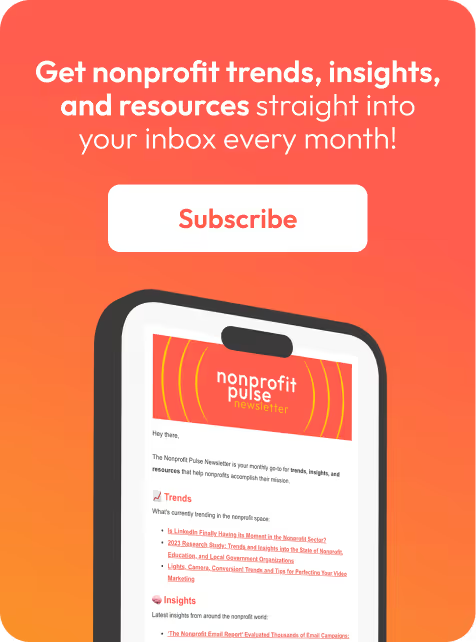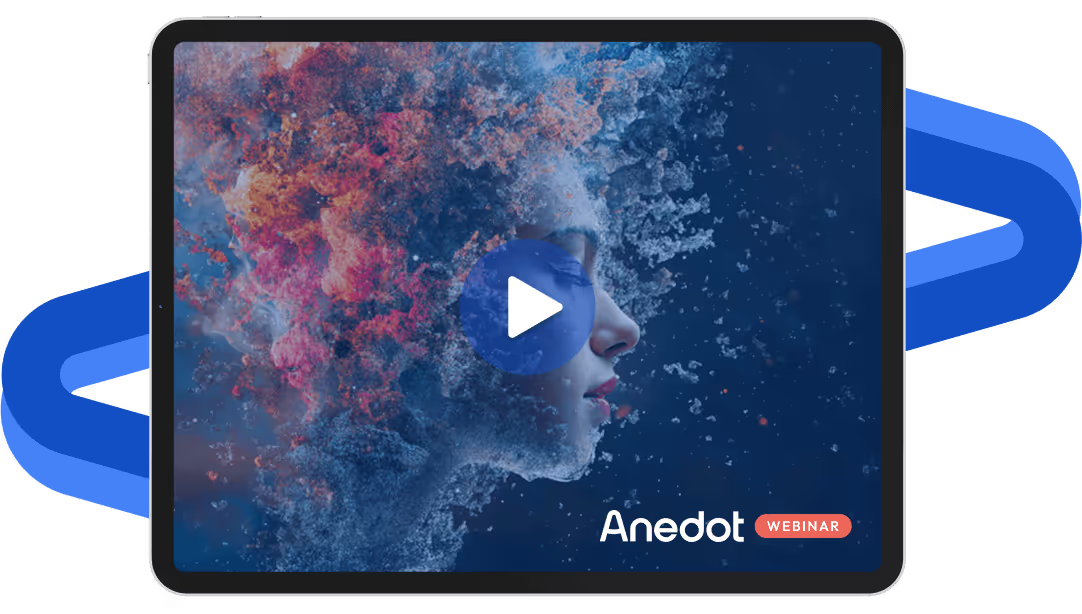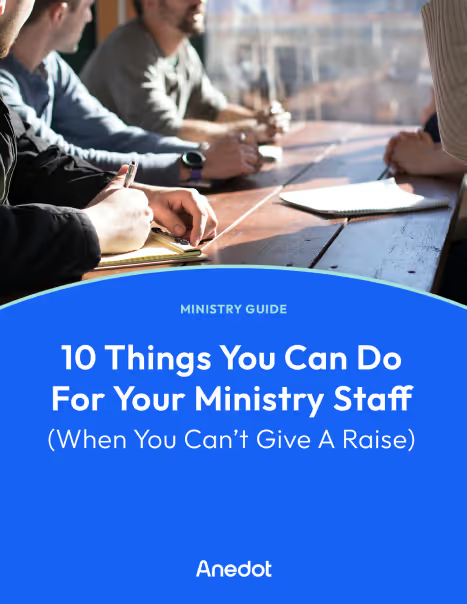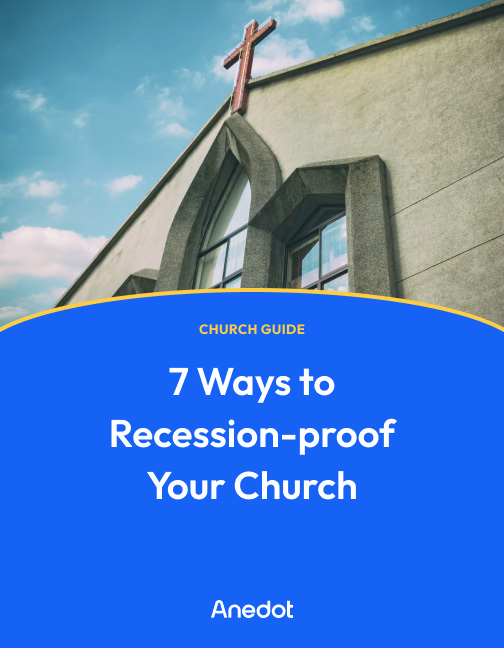Anedot Learn session transcript ↓
Patrick:
Hey, this is Patrick from Anedot. Welcome to Anedot Learn where we help grow your organization through giving.
Today, we're joined by Tim Bertram who is the co-founder at Optimize Consulting. He'll be sharing helpful tips on donor prospecting.
Thanks for joining us today, Tim.
Tim:
Yeah, of course. Thanks for having me, Patrick.
Patrick:
Yeah, I know we've done one of these before, on how to partner with fundraising consultants.
I think it's been like over a year now, so it's great to have you on talking about a new topic where you kind of share some of your expertise and maybe new things that you've learned over the last year or so, because it's as you know, as we know, things are always changing.
Tim:
Yeah. Yeah. I mean, hopefully my podcast powers have grown over the course of this year.
So yeah, we've learned a lot over the course of the last year or two. Obviously the economy has been a lot different, so it's forced us to learn to adapt.
So hopefully I can share a few things and people get a few words of wisdom out of this.
So yeah, I mean, fire away on any questions you have.
What recent challenges have you encountered in donor prospecting?

Patrick:
Yeah. I mean, so when we talk about prospecting, you know, we're talking about finding new donors.
You know, you mentioned the economy. You know, how has that changed more recently when you're trying to find new donors?
What have been kind of the greatest challenges, whether it be economic or competition or whatever, but what have you seen that's been challenging recently?
Tim:
Yeah. So, when you do prospecting, there's this kind of two approaches that most agencies or nonprofits fall into is this kind of the direct appeal where you're just going straight for the ask.
And then there is the lead generation approach where you're trying to build up a big email list and solicit them over the course of the following 3, 6, 12 months, whatever, and to eventually get them to become a converted donor.
So there's a few benefits, downfalls to each of them, of course. But what we found is that on social media, especially on like things like Facebook costs, I mean, CPMs are way up.
Lead generation is becoming a much more costly venture than it used to be.
I mean, five years ago, used to be if you ran a somewhat decent ad, you could, you know, cross your cost per lead and get pretty decent conversion.
And that's just really not the case anymore. I also think that digital just like mail has this problem of there's just there's way too much. Right?
Like who needs another email in their inbox today or who needs to get another ad on Instagram? Nobody.
So you really have to stand out, your content has to be really unique.
It's got to be something that people have never seen before. It's something that you got to be in front of the right audience, you have to have the right eyeballs in front of you, too. So it's got to be something that's unique that stands out.
And then you've got to also talk to yourself and say, well, you know, if I’m doing lead generation, you know, what kind of costs per lead am I willing to have?
One question we often ask clients too when we get started is do you know what your cost per new donor is? Usually people have no idea what that figure is, actually.
So kind of figuring out, all right, what is the math behind what it costs us to get not just a new lead, but a new donor is a really good equation that you got to evaluate.
What recent donor prospecting approach has shown the best ROI?

Patrick:
That makes sense.
When you're looking at the different methods you mentioned, you know, both lead acquisition and just direct ask, you know, when you're talking about ROI, what have you seen the best ROI on?
You know, what kind of approach have you seen the best ROI on lately? And can you kind of walk us through what the conversion funnel looks like for that approach?
Tim:
Yeah, sure.
So all the different methods, I mean, like list rentals, revshares, texting, ads on Facebook, sponsored content, all of them kind of have varying degrees of success or depends on your message as well, which is the classic consultant answer, which no one likes. It depends, right?
→ Learn more about the difference between revshares and email list rentals!
But in terms of what we have found is the most successful in terms of ROI and I also think about ROI in two different ways.
So there's how should I spend? And, how much did I earn back?
You know, well that's the pretty simple math, right? That's I think, ROI that people look for initially.
But we also really insist that if you're a nonprofit, that you have some kind of wealth screening software.
So like the three big ones that people usually seem to use are iWave, WealthEngine, DonorSearch. I'm not really married to any of them. I do prefer iWave, I guess.
But sometimes when you apply that wealth screening, you know, maybe this list rental over here raised less money.
But we can see that through wealth screening, oh, these donors have a much higher net worth and propensity to give score.
So we actually want to spend more time with this list rental or this audience instead.
So, yes, how much do I spend? How much I earn is important. But also, you know, at the end of the day, right? What are we trying to do?
We're trying to find transformational donors that can really move the needle of your organization to give more and more than larger gifts after you develop a relationship.
So in terms of what avenue have we found to be the best ROI, it still continues to be email list rental.
Email list rentals and revshares for us.
Texting, it's a lot of really kind of instant gratification of, yeah sure I'll respond to this. It’s not, it doesn't require a lot of thought or you never want to put a lot of friction between a donor.
But one thing I will say that mail has an advantage of is in order for you to complete a donation via the mail, there's a lot of friction you have to deal with.
You had to open that letter. You had to write a check. You have to mail it back. Maybe they pre stamped it, maybe they haven't. You got to send it back.
So a donor has like a more time to consider, which also means they have more time to not convert of course, but with things online like an email or an ad or a text message.
Sometimes that friction can make for easier conversion rate, but a lower first time gift.
So we found that email especially longer form copy kind of overcomes that problem where it's still this avenue for easy conversion, but it does enable the donor to really consider your value prop too and consider making a larger first time gift.
So we still prefer long form email prospecting than most any other thing.
Patrick:
And beyond initial conversion, I mean, you kind of hinted at this.
Are you also saying that you're seeing follow up gifts are significantly higher on direct mail fundraising and some of the ones with more friction, is that kind of what you're seeing or is it just strictly conversion on first time?
Tim:
Strictly conversion on first time. There is this myth that online nonprofit fundraising is only small dollar, and that's just not true. I will concede that sometimes online as a smaller first time gift.
But that is again why that wealth screening component is so important.
There's so many stories of different groups that have like, oh, this I mean, we had a group in Michigan where a donor that was 11 miles down the road from them gave $35.
Then they did wealth screening, they can see, oh, this is an interesting zip code that they live in and they had a pretty sizable estate.
So this donor gave $35, but have they not done the wealth screening, they never would have seen that, oh, this is this is a big gold nugget for us. Like, let's go try to pursue a meeting.
So then they went to their house, they brought him by the office and were able to successfully cultivate them and land a larger gift with wealth screening.
Have economic shifts impacted commitment cancellations or recurring gifts?

Patrick:
I mean, you kind of hinted that the economy's obviously changed some things and using wealth screening, have you seen movement in terms of commitment cancellations or recurring gifts based on wealth?
Like I don't know if you’ve seen a drop off across the board, if you've seen a drop off with certain groups of people, is there any sort of interesting tidbits that you get there that may influence how an organization may want to prospect?
Tim:
I've only seen it drop more so on the initial acquisition than I have retention or canceled gifts or anything like that.
And I would really put it on the organization or their team to if they're seeing a drop in retention or they've seen a drop in their house file activity.
I kind of look to reevaluate what you're doing in terms of your cultivation efforts.
I mean, it depends on the size of the donor or kind of what their situation is. But I think if you have programs in place to, you know, have a multi-channel approach to your cultivation.
So not just, you know, we’re going to send them an email once a month, you're going to have a lot of problems. Your retention is going to drop.
You're going to have a lot of problems in terms of what donors are actually being cultivated.
So but having a multichannel approach, making the phone calls, really investing those relationships, we haven't seen all that much of a drop in retention or cultivated donors.
Patrick:
And are you seeing an increase in any type of donor for first time gifts?
Is there maybe a type of donor where you're like, man, it’s really seemed like this type of person or this person that we're targeting seems to be engage more than maybe they were in the past. Are you seeing anything like that?
Tim:
Nothing stands out to me at the moment. I do think that we continue to prove the theory that the longer copy still will net us first time donors that have a sizable net worth.
You really got to, you got to give them something to kind of read. And you know, you're not giving them a research paper by any means.
You're not giving them your like, here's the about us and every single page on our website that's going to kill your conversion.
But you really got to lay out what your value prop is, what your mission is, how you're moving the needle in terms of what you're doing.
And giving them a little bit of meat on the bone and help still net those people.
So I encourage people to write a longer copy that will net you bigger donors.
What are some best practices for copy length in donor prospecting?

Patrick:
What’s too short or what’s too long, like if somebody were to say, hey you know longer copy okay you know can I, can I push my form super below the fold? Like, what is too long?
Tim:
Yeah, yeah. So this.
Patrick:
What kind of advice would you give there?
Tim:
This is something we debate within our own company all the time so and you know, it's funny.
You test different things and sometimes there's luck of the draw. But generally I would say it depends upon a few things.
So you know, if you're running for president, right? And you send out an email that says we're matching your gift a 1,000%, the sky is falling, and click the big red button, it'll probably do well because you have such a strong name, right, for either party.
If you are a nonprofit concerning yourself with tax policy or education reform, you're probably going to have to add a little bit more value into that email than you would be for a big presidential campaign.
So to me, sometimes what you want to do is, you know, we try to lay out the problem, the value prop really fast, give them a small ask in the in the beginning.
That way, you know, there is going to be that audience, people that do, they’re going to read the first two paragraphs or decide if they’re going to donate or not.
So giving them that option. So kind of having a soft ask up top and continuing to lay out that vision and that value prop and having the much stronger ask to be closer to kind of the midsection or the bottom of the email, we found to be the best formula for getting those bigger new donors.
But there is something to be said as well about, you know, having a softer ask up top and continuing down with what your request is going to be.
Patrick:
For the smaller dollar folks. What is your content optimization kind of look like for them or the folks that you think probably have a lower capacity?
What is it what does it look like for them in contrast, as to some of the folks that really like a lot of copy, what is what does that kind of look like from a content perspective?
Tim:
Yeah, from the content perspective, let's say, in terms of laying out what your vision is and everything they, you know, it's kind of this is something that we debate with our clients fairly often is, you know, some of the smaller dollar donors, they want more red meat, right?
They want kind of that hard hitting, that big punch in the beginning.
And there's truth to that. I mean, even big donors too want some of that, you have to pull them in emotionally somehow.
So providing a little bit of that and then giving them some substance, I think is important for pulling in both crowds, but for kind of the smaller dollar crowd, you want to have a little bit of a punch, but you still in terms of, you know what I think the content that best produces the best results is you got to give them something where they can really see where their dollar is going.
Yeah, I think people can stand out by really writing out what they're their value prop or their mission is because a lot of emails that, you know, I sign up for all these lists because this is what I do for a living.
So I want to see what people are, what people are up to, what's working, what's not, clicking links and testing things.
And a lot of people are failing to really kind of write out what they're really trying to do and have a personal relationship with people.
And, you know, on prospecting is a little bit harder, right? This is someone that we've never met before. Maybe they've never heard about us, so it's hard to write a personal email.
But to me, one thing that agencies and nonprofits will do wrong when they’re writing their content is you know, they'll write their content as if, you know, I'll write the email that Tim Bertram would want to read.
What would inspire Tim Bertram to give? That's wrong.
You want to write the email that would inspire your target donor to give.
There’s of course, you know a shared there's overlap there and what you would be inspired to give for. But the message that would inspire me is not going to give my profile donor of, you know, someone that 65 years old to give a first time gift.
When you're writing your content, think about you're writing for one person and it is not you. You're writing for what you believe to be your ideal donor.
What is an effective strategy for donor nurturing?

Patrick:
Yeah, that makes that makes a lot of sense. I mean, I think, you know, we even think about that too, about target personas, right?
Who are the people who would actually be engaging with something and want to engage with it right? And what kind of content can we provide for them? Which is why you're here today.
One of the many reasons is, is the type of thing that people do tend to find helpful. You know, when you're thinking about nurturing relationships, let's think about the leads that don't give initially.
You know, what are things that you see, whether it be your company or organizations you work with. What are the things that you see them do well and then do poorly as it relates to that nurturing?
And when you look at this, what is something you look at and say, man, they really should do this, like it drives me nuts if they're not doing whatever it is.
Tim:
Yeah, I'd say the 80/20 of this is you need to think about your leads and your new donors or whoever is coming into your database.
You need to think of a multichannel lens to your approach to nurturing or cultivating these donors for these new emails. So what does that mean?
So, you know, we capture your emails. I think it's about 20% it’s a little bit less than 20% of all the new donors that we get for our nonprofits.
They never open another email again. So that sucks. I mean, we're already at the get go. We're losing 20% on email.
So that's, I imagine, a similar case when it comes to just simply lead generation, right? There's going to be an audience of, okay, we got 500 new emails, there's going to be a segment of those people that will never open another email again.
So if you think that email only is going to cut it, you are wrong.
You need to think about your lead nurturing and your donor cultivation as a multichannel approach.
So let's talk about donors first, because one's a little bit easier.
The new donor comes in. You know what ideally what we want to do is they get redirected to a thank you page with a video thanking them for their gift, asking them for non-monetary action, so they'll follow us on social media.
Go watch this video, whatever. Ideally we can then depending upon how sophisticated your CRM is, automate a text message that is sent out to them that says, hey Patrick, just got your first time gift of $100 bucks. Thank you so much. We recorded a thank you video. Click here to watch it.
Great. Now, again, since we're using Anedot and we have their email address, we have their physical address, we potentially have a phone number too, what we're also going to want to do is again depending on how sophisticated your CRM is, send them a postcard, say, hey, thanks for this, give them a QR code about a video they can watch, all that good stuff.
We're then going to enroll them into a welcome series to get in their inbox and everything. I'd also then recommend adding them to an audience in Meta and running an ad to them so that we are on top of them.
Again, this is a big problem with online fundraising that it's kind of like Amazon, right?
Where I’ve ordered something on Amazon and then something shows up at my door the next day. What’s this? I forgot that I spent $50 bucks on something on Amazon.
And people do that with donations or they forget that they donate or they fill out a lead form.
Patrick:
Oh, we get it every day. That's where we get the donor support.
They’re like, what is this thing in my billing statement? And then when you tell them, they’re like oh yeah I remember that now.
Tim:
Right? People forget, I mean, even even big donors, people that if someone I mean, you've had it before or someone's made $1,000 first time gift, and if the development officer doesn't give them a call relatively soon, that donor will forget, like I gave $1,000 to you, who are you again?
And that’s the nightmare, right? That's what we're trying to avoid.
So on on the donor front it's really important that all those things are done because I want to cement a relationship in that donor’s mind.
Same thing with a lead, with just a email that we get right? We're going to have the same problem, if not worse.
The donor had a transactional relationship with you. They gave you a contribution after they saw an email, saw an ad or whatever.
So they may remember you a little bit more because they spent more time with you and gave you more information. But that lead, you know, I fill out lead forms all day long just to test things and I forget things that I fill out.
So having a strong nurture series that you automate through your CRM, getting them emails in there, making sure deliverability is on point, those are all really critical things.
Actually having that donor or that lead remember who you are. And again, having some unique content.
If you haven’t read Seth Godin’s Purple Cow. That's a book I really recommend to kind of think through like what your marketing content actually, how it stands out in the person's mind yet to be remarkable. Otherwise you'll be forgotten.
Patrick:
Yeah, that is super, super helpful advice. And one thing I know we worked with you and others on too is on the CRM side, us having a native integration with HubSpot.
Our official app for Salesforce is approved, and having those integrations is extremely important because it is interesting the different things that you can do with automation and it's why we keep focusing and spending a lot of time on that because we recognize, okay, we can help on the donor support side and we can help make it really easy to give.
But then that data needs to easily flow. So you can do all the automations and things that folks like you do to be successful and what with your activities.
Tim:
Yeah, funny enough, I started my career in mail and now I'm doing it again by integrating mailers being sent to new donors. And so, just it's coming around full circle. So but that stuff's really important to do because if you don't have that multichannel approach to your leads or to your donors, you're a lot more likely to lose them.
And I'm sure you found this too, where there are going to be some donors that have a preferred channel to give.
Maybe you caught them online, but if you ever want a larger gift, you're going to have to speak to them on the phone because they don't check your email all that often or you’re going to have to get them you know, like my constant joke is, our donors, they're not they're not, you know, watching Netflix on Friday night thinking about what so-and-so nonprofit is up to it, right?
But maybe if we had them in an ad audience, they are scrolling on their phone at the same time. All of a sudden, do think about what we're up to.
So I would if I to say anything about nurturing, it's have a multichannel approach to how you go about donor cultivation, nurturing.
Patrick:
And it's funny too. I was talking to a friend recently about attribution and the idea where people think, oh, you see an ad, you do this, and now when you think about yourself, when you buy something, it's like, oh, I Googled something, then I got an Instagram ad, then I did this, it’s like it's a very winding path, right?
And I think it's really no different for a lot of time for donors too where they hear and think and then they do it that way.
Or sometimes I talk to politicians too where they say, oh yeah, I know all about you. I've heard of you. They’re like I have never met this person in my life.
But apparently this news article, they saw me on Facebook, you know, and it's kind of funny how it takes multiple sort of, you know, multiple sort of kind of reminders, right?
In different forms before somebody is like, okay, yes, I'm going to engage. I'm going to do something with this.
Tim:
That's why we always tell, you know, we can often find the attributed source of, okay, donor made contribution through X platform or from like X email or whatever.
But then we often say like, okay, this is a donor that we're trying to cultivate. Let's have our development officer asking, hey, may I ask what inspired you to give and how did you hear about us?
Even though we theoretically know the answer and the answer is often different, like, oh yeah, Facebook.
But they donated off an email or something. Oh, okay. Well, that's how they view this. So we need to continue advertising on Facebook.
What are some challenges people can face in the donor prospecting process?

Patrick:
And it's funny too, because we've, you know, we recently even internally at Anedot, we put a new software in place that kind of allows us to see that journey better.
And it's fascinating just to see the multiple paths or even how it's over a period of time too, right? Or you would assume, oh, yeah, they're just really interested.
It's like now people are like, oh yeah, it's interesting. They come back a week later. Oh yeah, I'm actually going to do something now. So just kind of funny how that works.
So I guess, you know, one thing that would be good to kind of talk about would be sort of an example of when you face challenges or obstacles in the prospecting process.
Like recently when there was like a client, like, man, this is a lot more difficult than I feel like it should be, or it's more difficult than you know, a lot of ours are and then one where you feel like man, this has just been massively successful. Can you kind of give a contrast between those two?
Obviously don't reveal any names or anything, but just two scenarios you can think of that come to mind of like something where it was like, man, I really feel like this was tough and why it was tough and then one was successful and why it was so successful.
Tim:
Yeah, yeah. So, you know, a few things that make for good prospecting content.
You have a strong signer that's going to help tremendously.
Like an email or an ad from a guy named Patrick or Tim is not going to be as good as a email or ad from Rand Paul or Candace Owens or whoever, right?
Like there’s just this name recognition that we have to wrestle with of, you know, when we send out prospecting content from a guy named Tim or Patrick, there's going to be a lot of ground we have to cover to introduce ourselves and to introduce the organization.
But if you have an email from Rand Paul, there's no introduction that has to be made. So sometimes a signer is something that can really contribute or contribute to the email.
Two, this sounds a little silly, but shiny object. If you're in the news, if you have something that people really care about, you know, like in 2020, right?
If you were in the education space and you were fighting critical race theory, that was something that, okay we have a shiny object on our hands.
What your value prop is, if you are an organization that does fundraising to legalize the sale of bone marrow, it's going to be pretty hard to have something that's a little red meat and can get people inspired to give, right?
So if we're kind of lacking on some of those things, then we could go to the drawing board up, okay, who are champions in our space? Who are people that would potentially lend their name to support the organization?
So let's think through that. I also think through, you know, your organization's message a little bit more toned down than something that’s a little bit more red meat.
You know, oftentimes there's like one issue or one thing that you're like, okay, we can go hard on this. So think, okay, how can we pump up the copy right there?
Three, I would also think through, you know, what is your offering to? What kind of lead magnet are you using to get people across the finish line to fill the form?
And what kind of process are you employing to nurture those leads? So reevaluating your lead magnet, how you're getting people into your database, I think that's somewhere that would be a good place to start, you know, some kind of value exchange that can happen with like a PDF of like how you're solving this problem or telling a good story is another way to get people across the finish line too.
→ Learn more about nonprofit storytelling!
A good example in terms of prospecting, I can remember, I can give an example from one of our clients too, the Tuttle Twins.
There's a few years ago, if you recall, where there was a Dr. Seuss book that was being banned. So we did a sponsored article with the Babylon Bee where it was like ten other children's books we need to ban right now.
And one was like a math textbook. One was the Bible, and then another was the Tuttle Twins. So that was a banger because it was just so timely.
It was such a funny article. Then at the very end, we had a fundraising blurb and it had a pretty serious return.
So sometimes finding unique opportunities to get creative in front of audiences that other people have built, that you know, hey, my supporters live here too, so let's get in front of them.
Sometimes that's a great combination to bring in new donors too.
Patrick:
I mean, and kind of bringing it back to something you said earlier as well. You have to think of who your audience is, right?
So who is somebody who's likely to be able to give or want to give, right? Because I know like right now I'm working with one of our customers, a church in Georgia.
They're doing a building campaign and they're doing some things that I think are pretty effective, like they have a timeline, right? So we're accepting donations this date to this date you know, so they're like, oh, it's timely and they're very specific.
I'm like, okay, our campaign is going to be these three buildings and it’s who we’re trying to serve.
And they're like, oh, we're prospecting for new members of the community or current church members, their parents, like in college sort of, you know, kind of a college town. And there's a lot of that kind of thing.
So it's interesting where, you know, similar but different, right? Because nonprofits obviously is very different if you're raising money for a c4 it's good to know all these issues.
But it's the same concept. Let's say you are a church or a ministry or something local. Okay, who locally would give and why would they give? And what are we going to say that's going to make it clear that the money they give is going to a good cause, going to something that they really would care about?
And I think that was really interesting the way that they did that, where it was very similar, where they did long form content in some places and for short form in others, you know, and kind of mix and match depending on who the target was.
And it was kind of cool though, because it does apply a lot of the same principles that you were saying. And this is just a local church, you know, and but it's a local church, so it also needs to raise a couple million bucks. Right? They're trying to you know, they're trying to put in, I believe, two new buildings.
So it's kind of interesting, though that you know, even if it is an organization somebody listening that says, well I'm a church or I'm a ministry or I'm a education institution, a lot of the same principles apply, right?
I don't care who you are, you can always you should always be trying to find new donors.
There's always somebody out there who would be interested in what you're doing and want to engage on it more.
Right? Want to help you with that mission.
Tim:
Right. There was this great guy who's got this line, “ask and you shall receive.” His name is Jesus. And he was right, people want to give.
But if you don't ask and don't give them the opportunity, they never will. I think it was one of Morton Blackwell's rules of like ask donors, you know, why did you give?
Well, because someone asked me. So if you don't ask, it's never going to happen. So absolutely.
How do you effectively cross collaborate with different teams?

Patrick:
Yeah. And as long as you make it relevant, right, it's not just like, well, I'm asking for the fifth time.
No, it's why, you know, why is now the time that you're asking? What are you asking for? You know, I remember one time, when I was helping an organization out, we were running, we're running an ad campaign for a petition to stop some bill.
And, you know, the ask was, hey, you just saw this ad which got you engaged. You want more people to see this?
And it works, you know, they're like, hey, yeah, I didn't know about this. Now, you know, now I do. And it's just kind of funny, you know? It's kind of funny how sometimes you don't think of it like that.
Like, hey, if they like this, just tell them, hey, I use this money to do this. Your money helps go to that. It’s funny that sometimes even something as simple as that, you know, people don't think about that.
And again, it may or may not work for you, in that aspect it did. But you know, this is why you always test things and hire companies like yours to do these kind of things.
So I guess just one or two more questions.
So you know, when you're talking about collaboration, we're looking at I'm sure some organizations you work with have multiple teams and cross collaborating, you know, how do you coordinate or communicate with other teams to kind of align efforts and where do you see problems when that doesn't go well?
Where do you see organizations maybe struggle when it goes, when it relates to collaboration and kind of efficiency in that way?
Tim:
Yeah. I mean, often the marketing and development teams, they have struggles with each other.
It's kind of funny to watch, so it doesn't have to be that way.
Patrick:
And we got the finance team on top of that right? We’ve got another layer.
Tim:
Good point. So I think having everyone kind of bought in on the strategy of what we're doing, either on the fundraising side or on the marketing side, I think that's important.
Making sure that, yeah, the finance officer that they know what efforts we're about to, you know, if all of a sudden we're going to bring in a thousand new donors, the person better be aware of it.
All right. I might have a headache in my hands.
Two, you know, especially with organizations that are growing, being okay with one of our jokes is, you know, we're full time problem solvers, but we're part time problem creators, right?
Like, you know, if we bring you in 500 new donors and oh, man, we didn't think about, you know, how this CRM doesn't have this connection to whatever or we need to increase our account with Zapier so we can continue doing more.
Like these are good problems to have. So thinking through, okay, we are going to encounter these problems and we're okay with wrestling with these problems, but I think it's just communication between those two departments and making sure that everyone's bought into what we're doing.
So, you know, whenever we onboard a new client, we always try to have a team members from all departments to hear what we're doing, understand what's going to happen next.
So that way they're always in the loop on everything. But I think having a development team especially know like, okay, these fundraising efforts are going out the door, be ready to go call these donors.
All that good stuff. Tee them up with the CEO, if it's someone that is a donor of note, all that kind of stuff.
But communication is critical. And just knowing that, hey, we're building something new, we’re exploring new ways of doing fundraising, so we will encounter problems and that's okay.
Patrick:
Yeah, I mean, that makes sense.
And it's interesting too how communication styles, which, you know, we talk about that too, communication styles, how different types of people communicate differently too, which I’m sure is part of it is recognizing okay you know the development planning people talk and work in this way, and the marketing talk looking this way and making sure that, you know, that to reduce that conflict because it can be interesting.
Tim:
Yeah.
Closing thoughts

Patrick:
Is there any final thoughts, tips, things that come to mind that you'd like to share?
Tim:
You know, really, I would just encourage, I think, something that we've really learned over the last year is that the multichannel approach is critical.
Being able to cultivate someone via texting, via email in their mailbox like physical mail, on social media with ads.
All that stuff really makes your job easier within prospecting because, depends what channels they're going to be responsive to.
Again, you don't know what channels influencing them to give on a different channel. All that stuff is really important.
So I think, kind of evaluating what you're doing for prospecting, what your value prop is, how you're bringing new people in, also weighing that ROI question, right? T
his raised X amount of money, but this brought in donors that are the people that we want at the end of the day.
Thinking through those kind of questions too and kind of what your 80/20 is. What are the 20% of donors that are going to get 80% of the project? So trying to find ways to land those new dollars.
Patrick:
Cool, and if they're so if there's somebody who listened or watched this and says, wow, Tim is really smart, his team seems really smart, who do you typically work with and what would be the best way for them to reach out to you if they did want to potentially work with you and hire you to help them with their prospecting?
Tim:
Yeah, yeah. So optimizeconsultingllc.com, you can go there and find my contact information or fill out a form and we'll follow up with you.
And then in terms of who we work with, we do a lot of fundraising, CRM management cultivation for pro-liberty nonprofits.
That's kind of our bread and butter, so helping them raise money, bringing new donors, then cultivate them to make a difference.
Patrick:
Well, thank you for your time. I greatly appreciate it. And this is Tim Bertram with Optimize Consulting.
So thank you for hopping on here and teaching us all about prospecting.
Tim:
Yeah, thanks, Patrick.
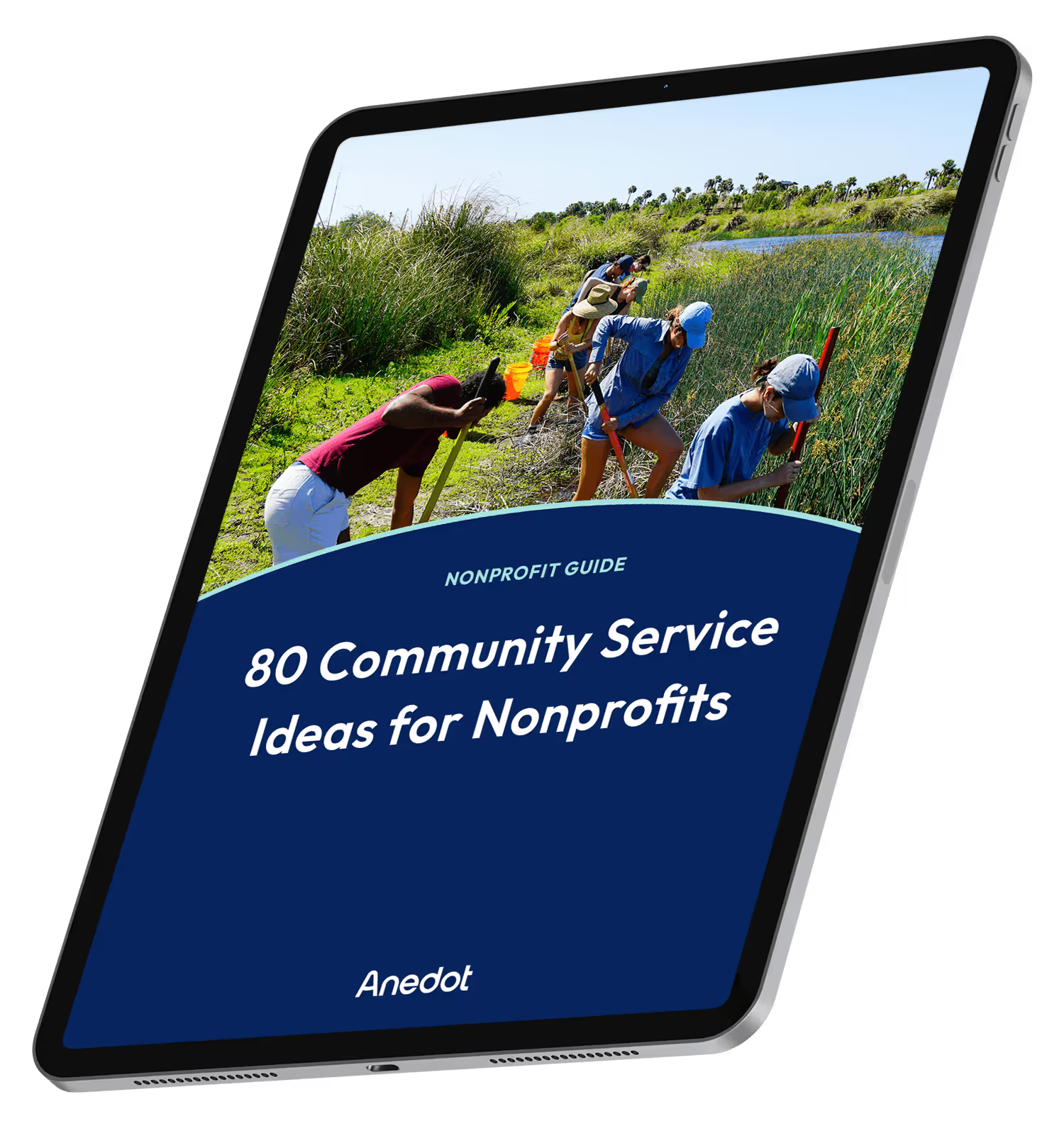
80 Community Service Ideas for Nonprofits
